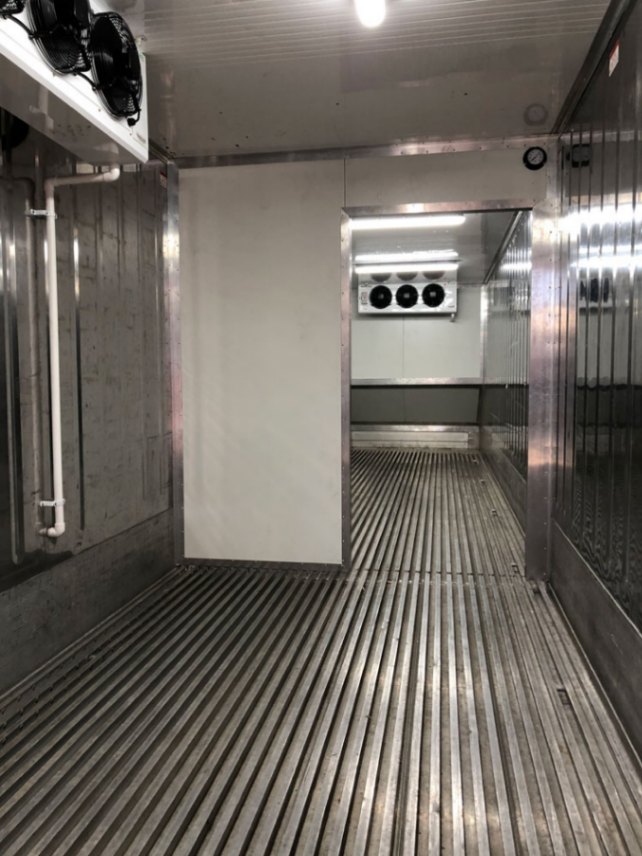Transporting perishable goods such as food and medicine demands specialised equipment to maintain quality and freshness. Refrigerated or reefer containers are designed to provide the necessary temperature control and ventilation to keep cargo intact during transit. However, it is crucial to adhere to strict safety guidelines when handling and operating refrigerated containers to minimise the risk of accidents. By ensuring proper refrigerated shipping container maintenance, the containers can continue to function effectively, guaranteeing the safe transportation of perishable goods. Here are some essential safety precautions to keep in mind when handling refrigerated containers:
Whether renting or buying a refrigerated shipping container, inspect the container thoroughly to ensure it’s in good condition and free from damage. Refrigerated containers are powered by electricity, posing a risk of electric shock. Ensure the power supply is disconnected before opening the container. Also, avoid touching any electrical components or wires without proper protective gear.
Before loading the cool storage container, turning off the power supply and ensuring that the refrigerator stops running is crucial. This precaution prevents any potential hazards from operating machinery during the loading process, such as trapped limbs or clothing. Closing the container doors before resuming power is vital to avoid temperature fluctuations.
Refrigerated containers weigh significantly more than dry containers when loaded, so it is crucial to ensure proper handling and distribution of weight in the container. Use appropriate handling and transportation equipment to move the container and avoid damage to the container or the goods transported. Also, always secure the cargo to prevent it from shifting during transit. Make sure to follow all necessary safety protocols while handling the load and container on-site and during transit. Overloading the container can cause damage to the container, increase the risk of accidents, and compromise the safety of the goods being transported.
Different types of perishable goods require unique temperature settings, ventilation, humidity, transportation time, packaging materials and dimensions, and cargo volumes. Before packing a refrigerated shipping container, all these essential criteria must be considered and confirmed to achieve optimal transportation conditions. Thus, testing, validating, and certifying that the refrigerated container is fit for transporting your cargo is crucial. Ensure that the container is appropriately labelled with information such as the nature of the goods being transported, the temperature requirements, and any other relevant information.
Set and maintain the temperature within the container per the manufacturer’s instructions and monitor the temperature throughout the journey. Ensure that the container is adequately ventilated to prevent the buildup of gases and odours, which could be hazardous. Be aware that refrigerated containers have limited cooling capacity and can only maintain the temperature of the cargo. Overloading the system due to excessively high cargo temperatures can cause system failure, damaging the cargo.
Transporting temperature-sensitive products is a significant risk, especially with the expected increase in transportation demand. It is essential to take necessary precautions and implement safety measures, including temperature settings, maintenance, packaging, and loading and unloading. When adequately executed, these shipping container safety precautions can prevent financial losses, reduce potential liabilities, and ensure the safety of your products.
Remember, when looking for refrigerated shipping containers for sale in Australia, only work with reputable shipping companies with relevant experience and expertise in refrigerated container transportation.

1. Site Selection
If you are not mounting the container for the long term, choose a spot where the ground is even and the soil firm and compacted so that it will support the frame of the container. If your site is rough or slanted you can add a layer of gravel or small stones to keep the container stable and secure.
2. Surroundings
If your container is going to remain in place for a length of time, it can be valuable to pave the surrounding area prior to installation. This will provide a solid firm base for your structure and will enable you to utilise the outer area of the container more easily.
3. Vehicle Access
If your site is in a position behind other buildings then you may have trouble getting your container to your site. There are options to have your container dropped in situ’ by a crane but this is expensive. If your site is accessible by vehicle you will keep delivery costs down. Setting up storage containers in Sydney, where the topography varies, it is a great idea to prepare a level area prior to delivery.
4. Weather conditions
It is ideal to have your container delivered on a day free of rain, after a dry spell. Installing your container directly onto sodden earth may lead to sinkage and misalignment of your final structure. If you are in a particularly rough area you may need to secure your shipping container to the ground, but in most circumstances, the natural weight of the container will hold it firmly in place.
5. Ventilation
If you are concerned about water or drainage around the site of your container then it may be worthwhile setting the container down on concrete blocks. This will keep it raised from ground level, free of moisture and well ventilated.
Betta Storage are your local Sydney specialists in movable new and used storage containers. Contact us to discuss your requirements and let us help you choose the right container for your needs.

